Location :
Significance of the Temple
It has been contended that the temple was initially known as Indreswara Temple devoted to the worship of Lord Shiva. The statues are made of wonderful red and gold sandstone, which is locally known as Rajarani and this is what gives the temple its name of 'Raja Rani'. The major attractions of the temple consists of the elaborately carved figurines. The Rajarani temple of Bhubaneshwar is dedicated to the deity Lord Brahma. The origin of such temple can be dated back to the eleventh century.
Cuttack, India Weather Forecast
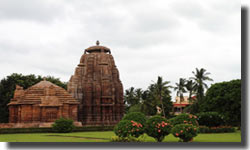
Rajarani temple has also been ornamented with marvelous and magnificent artistic sculptural carvings and stands enclosed within a beautiful garden.
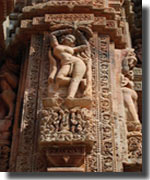
Like Mukteswara Temple in Bhubaneshwar, the Rajarani Temple stands on a raised platform. Its spire is decorated with clusters of turrets which is a replication of the spire itself, emerging form the rib of the spire. The sculptures on the Rajarani Temple have a depth that was lacking in the Mukteswara Temple sculptures. The Jagamohana (porch) though demonstrating a pyramidal structure is yet to take on as a complete structure of its own. It bears signs of repair in 1903 when it collapsed into ruins.
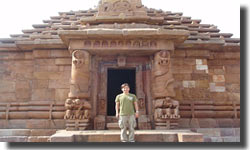
The sculptures adorning the walls of the deul are alive and energetic. Especially attractive are the sculptures of women in dance poses that hint at the practice of Odissi dance, coquettish women, there are women carrying children, looking at their reflection in the mirror or playing with birds and nature.
One can have a look at the 'Guardians of the Eight Directions' projecting from the base of the temple in the eight directions, which is starting from the gateway in a clockwise direction around the porch and the deul to end back at the torana. The eight guardians that you'll see on your tour to the Rajarani Temple are Indra (god of rain), Agni (god of fire), Yama (god of death), Nirriti (god of suffering), Varuna (god of ocean), Vayu (god of wind), Kubera (god of wealth) and Ishana (Shiva).
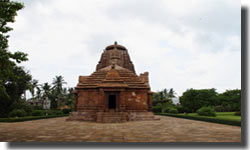
There is a sculptural frontage and interiors of the temple which are clearly marvelous. The sculptural imagery of the temple is stylish and dynamic. Various postures in the temple do portray very much fascinating images of mundane life like a women carrying child in the arms, and women appreciating their reflection in the mirrors.
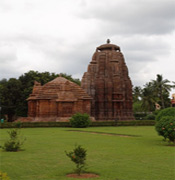 |
Nearby tourist places to Rajarani Temple
Bhubaneshwar Cuttack Konark Puri |
The beautiful feminine figuresshown in passionate dalliance are also truly wonderful. Sculptors of women in dance style hint the practice of Odissi dance. The stone imageries of women playing with birds and nature are also worth seeing. |
How to Reach the Temple
- Through Air -There are regular Indian Airlines flights moving to Hyderabad, Nagpur, Kolkata, Delhi, Varanasi, Mumbai and Chennai. The airport here is very close to town.
- Through Railways -the city of Bhubaneswar is on the main Kolkata to Chennai line so all the main trains stop here. The Howrah-Bangalore Rail and Guwahati-Bangalore go to Bangalore. The Coromandel Express is also good train going to Chennai. And even there are direct trains to Delhi, Agra, Remuna, and Varanasi. The Rajdhani Express here departs from Delhi one day a week on Friday to Bhubaneswar. The Puri-New Delhi Express is a good train to Delhi.
- Through Roadways - the best way to get from Bhubaneswar to Puri is on one of the Canter minibuses that leave from the old bus station in the center of town and even there are buses available from the new bus stand. There is a direct bus to Konark too. One can also traval from Puri buses to Pipli and from there get another bus to Konark.



